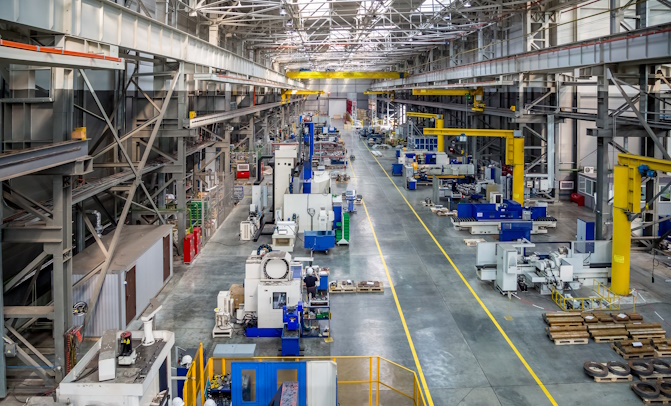In his blog, Adrian Wood, Director of Strategic Business Development at DELMIA, argues that one of the basic decision processes companies make to evaluate strategic changes to mitigate the impact of tariffs on production locations is answering the question below:
“What is the capital investment required to expand or build new manufacturing capacity?”
Obtain a strategic and competitive advantage
To frame an informed and accurate response to the question above requires a Virtual Twin model of production systems, so that we can accurately evaluate what our new or changed facilities and manufacturing process should look like.
To know how much money a new or expanded plant will really cost, and to gain a competitive advantage, you first need to picture the plant in full detail. The DELMIA Industrial Engineering software does this by pulling together every scrap of digital evidence you already own—drawings, CAD models, bills of material—and turning them into one living, three‑dimensional replica of the line, the machines and the work that happens there.
With the virtual twin in place, teams can “fly through” the factory before it exists, test different layouts, and watch the flow of parts, people and robots to see where space, time or energy will be wasted.
In short, the virtual twin turns a risky capital guess into a confident business plan—well before the first robot is ordered.
Your planning step-by-step guide
Here’s how the virtual twin comes together with DELMIA:
- Consolidate all data – Pull 2‑D drawings, CAD models, bills of material and point‑cloud scans into one platform so equipment, layout and process data share a single source of truth.
- Process Engineering – Convert the engineering service BOM software into an MBOM, sequence operations, assign resources and generate work instructions. This locks the product and the process together before any physical spend.
- Machining & Additive – Simulate NC toolpaths or additive layers directly on the twin, validating surface quality and spindle loads while updates from design propagate automatically.
- Virtual Factory & Flow – Lay out machines, conveyors and aisles in 3‑D, then run flow simulations to check throughput, buffer sizes and shift patterns, exposing bottlenecks early.
- Robotics & Automation – Drop any of 2 000+ robot models into the scene, generate collision‑free paths and optimize cycle time and energy use, ensuring the chosen automation mix meets takt without overspend.
- Ergonomics & Safety – Evaluate reach, posture and load‑handling for every manual task, and verify that robots, AGVs and people maintain safe clearances.
- Virtual Commissioning & Go‑Live – Plug real PLC or robot code into the model, debug logic and train operators in the twin, cutting on‑site commissioning time.
- Continuous optimization – Once the plant is running, stream MES/IoT data back into the twin to monitor OEE and rerun “what‑if” scenarios as tariffs, demand or product mix changes into its cycle.
Turning scattered engineering assets into a clear vision
Following this chronology turns scattered engineering assets into a clear vision with a living factory model that answers the CapEx question. By the time the first robot is ordered—or cancelled—you have already:
- Flown through the future plant, spotting space, time or energy waste.
- Stress-tested dozens of tariff, wage and logistics scenarios in hours, not weeks.
- Locked product, process and people into a configuration that maximizes OEE on day one.
That is why companies using Virtual Twins and the 3DEXPERIENCE platform report faster go-lives, lower change-order spend and higher resilience when trade rules flip overnight. For example, Shanghai-based robotic line builder CNBM Triumph Robotics reduced time to delivery by 30% and reduced costs, both from labor and from correcting quality issues from the 3DEXPERIENCE platform.
More companies interested in exploring our solutions for a strategic advantage during disruptions can contact us here.

